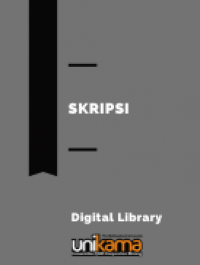
Electronic Resource
Figurative Language Analysis In John Legends Songs
Language is a tool to communicate that is created from human mind, and it divided into spoken language and written language. The song writer usually uses figurative language to create their lyric in order to make the listener enjoy the song and make it more interesting and imaginative. The objective of the study are: (1) Describing the kinds of Figurative Languages used in the song lyrics by John Legend (2) Describing the meaning of lyrics using Figurative Language in John Legend’s songs.
This study focused on types of figurative language used in John Legend’s song lyrics in Love in The Future album that was released on August 30th , 2013. There are sixteen songs in this album but the researcher used thirteen of John Legend’s songs to be analyzed because to make the analysis more detail. The design of this research was descriptive qualitative research, in which the data are taken from John Legend’s song lyrics. The instrument of this study is the researcher herself. Triangulation is used to prove the validity of the data.
The result of this research explain that there were 63 data of figurative language in John Legend’s song lyrics. They are 8 Alliteration, 4 Oxymoron, 23 Hyperbole, 2 Personification, 15 Repetition, 7 Anaphora, 1 Symbolic, 5 Simile, 1 Allusion, 1 Paradox, and 2 Metaphor. From the result above, the researcher concluded that hyperbole was mostly found in the song lyrics. Hyperbole is mostly used in the John Legend’s song lyrics to beautify the phrase to make impressed people about their feeling. Different from the the previous study that analyzed figurative language by Nurfiyanti (2016), she conclude that kinds of figurative language that used in her analysis are metonymy, hyperbole, repetition, personification, simile, paradox, symbolism, alliteration, and parallelism.
Based on the conclusion, the researcher would like to offer some suggestions. The first is for students, if the students take songs not simply for the pleasure of singing but also must able to go beyond it through analyzing in order to be able to get the meaning. The second suggestion goes to English teachers. In order to make the teaching learning process more enjoyable and interesting, they must be a well prepared material to be taught about figurative language. The last suggestion is addressing to the next researchers especially on analyzing figurative language and the researcher suggest to study more about figurative language with different perspective in analyzing figurative language to make the analysis more interesting and different from this research or the other research.
Ketersediaan
| 2130957/SB/2019 | KKI 420 RIS f/s | Perpustakaan Unikama | Tersedia |
Informasi Detail
- Judul Seri
-
-
- No. Panggil
-
KKI 420 RIS f/s
- Penerbit
- Malang : Pendidikan Bahasa Inggris-Unikama., 2019
- Deskripsi Fisik
-
v, 49 hlm, 26 cm
- Bahasa
-
English
- ISBN/ISSN
-
-
- Klasifikasi
-
420
- Tipe Isi
-
text
- Tipe Media
-
PDF
- Tipe Pembawa
-
-
- Edisi
-
1
- Subjek
- Info Detail Spesifik
-
-
- Pernyataan Tanggungjawab
-
-
Versi lain/terkait
Tidak tersedia versi lain
Lampiran Berkas
Komentar
Anda harus masuk sebelum memberikan komentar
 Karya Umum
Karya Umum  Filsafat
Filsafat  Agama
Agama  Ilmu-ilmu Sosial
Ilmu-ilmu Sosial  Bahasa
Bahasa  Ilmu-ilmu Murni
Ilmu-ilmu Murni  Ilmu-ilmu Terapan
Ilmu-ilmu Terapan  Kesenian, Hiburan, dan Olahraga
Kesenian, Hiburan, dan Olahraga  Kesusastraan
Kesusastraan  Geografi dan Sejarah
Geografi dan Sejarah